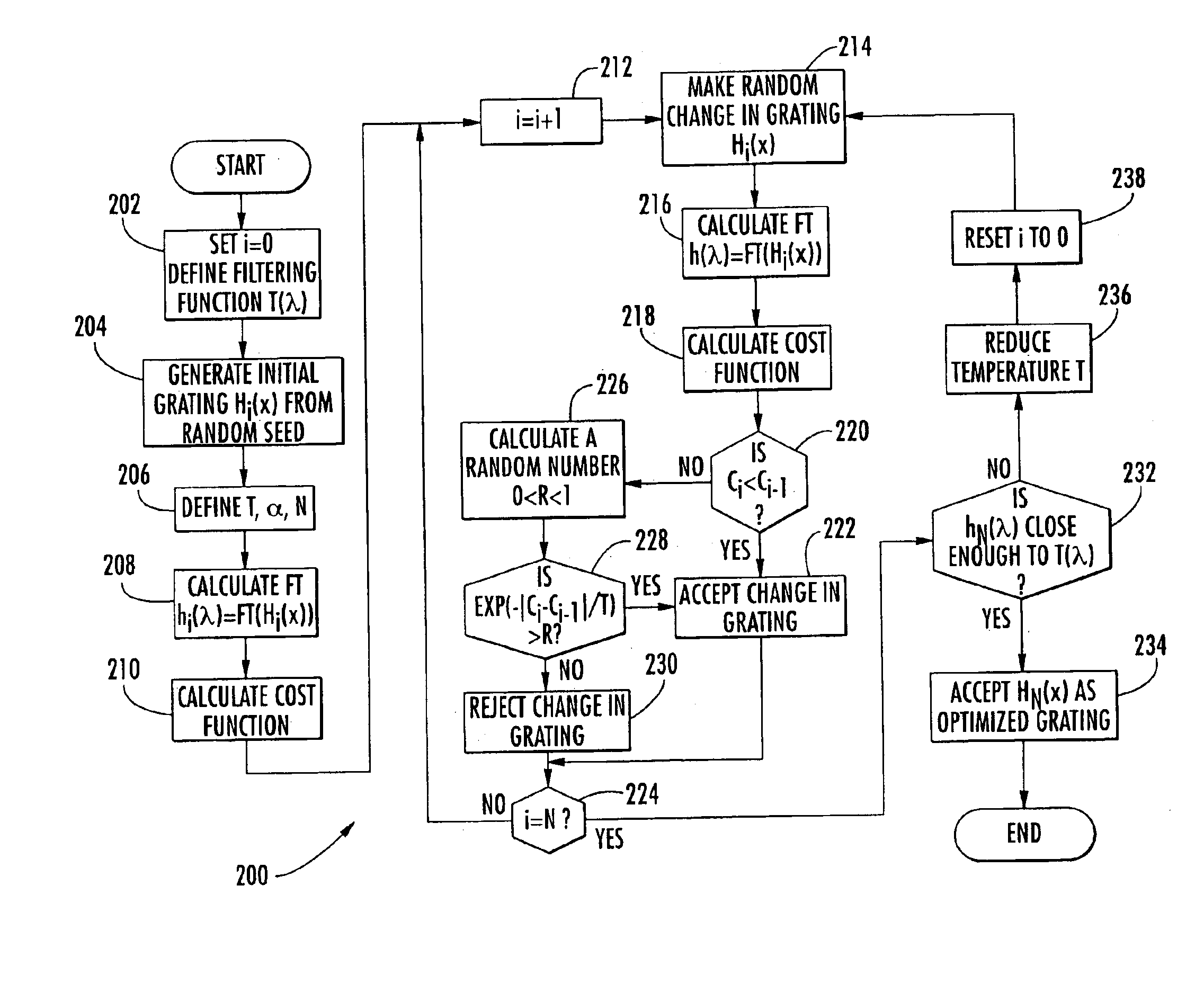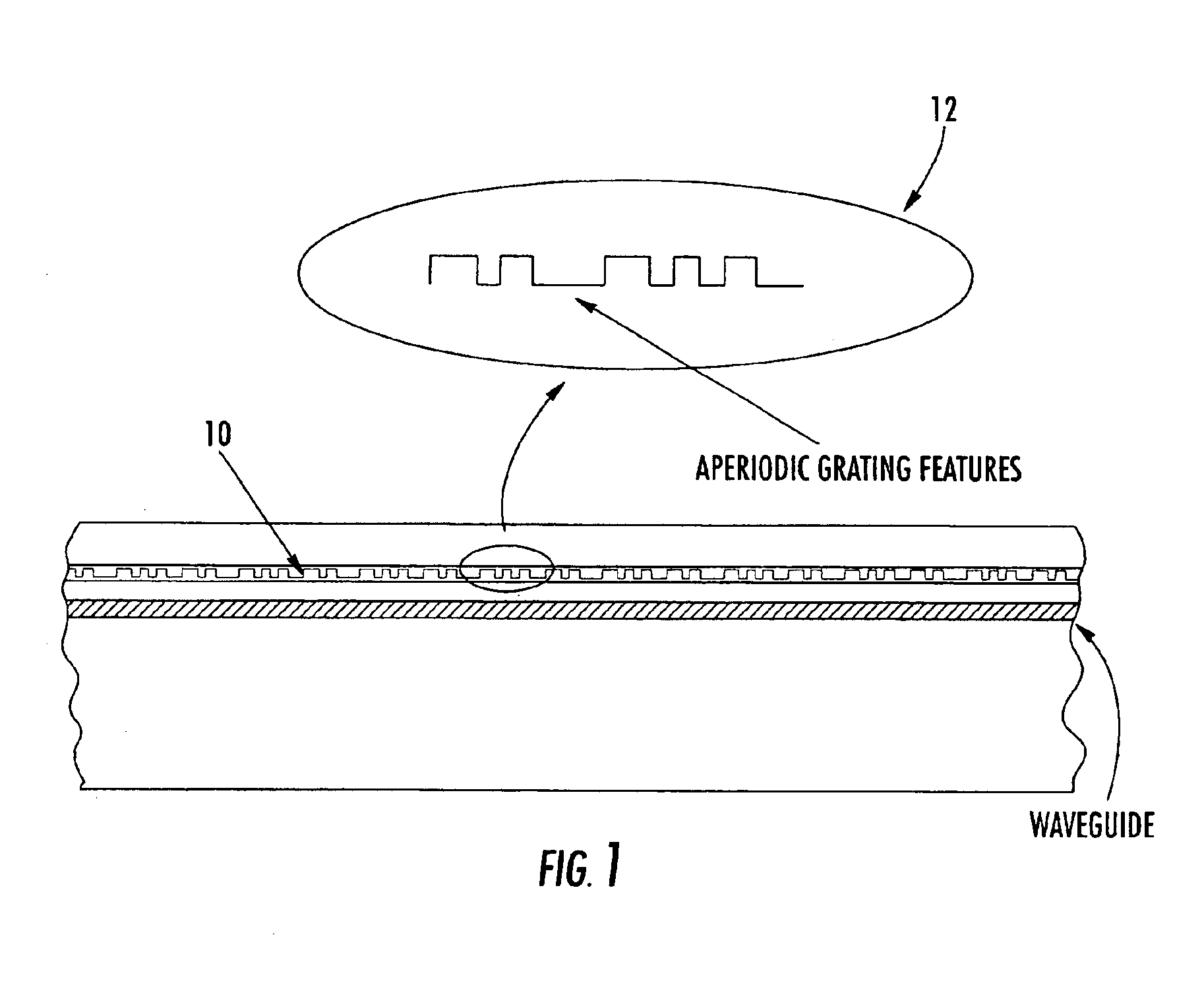Optical filter device with aperiodically arranged grating elements
a filter device and aperiodic technology, applied in the direction of instruments, semiconductor lasers, cladded optical fibres, etc., can solve the problems of limiting the versatility of optical wdm communication systems, affecting the efficiency of optical aperiodic filter devices, etc., to achieve the effect of reducing the contrast, reducing the number of elements, and inefficient methods
- Summary
- Abstract
- Description
- Claims
- Application Information
AI Technical Summary
Benefits of technology
Problems solved by technology
Method used
Image
Examples
Embodiment Construction
[0027]The present invention will now be described more fully hereinafter with reference to the accompanying drawings, in which preferred embodiments of the invention are shown. This invention may, however, be embodied in many different forms and should not be construed as limited to the embodiments set forth herein. Rather, these embodiments are provided so that this disclosure will be thorough and complete, and will fully convey the scope of the invention to those skilled in the art. Like numbers refer to like elements throughout.
[0028]The method described herein is directed, inter alia, to an efficient algorithm for the design of aperiodic grating structures with a predetermined spectral response, such as a comb filter for applications as mirrors in optical waveguides and in DFB and DBR lasers. The structures described herein can be fabricated, for example, by electron-beam lithography and / or or photolithography using, for example, electron-beam-written masks.
[0029]FIG. 1 illustra...
PUM
 Login to View More
Login to View More Abstract
Description
Claims
Application Information
 Login to View More
Login to View More - R&D
- Intellectual Property
- Life Sciences
- Materials
- Tech Scout
- Unparalleled Data Quality
- Higher Quality Content
- 60% Fewer Hallucinations
Browse by: Latest US Patents, China's latest patents, Technical Efficacy Thesaurus, Application Domain, Technology Topic, Popular Technical Reports.
© 2025 PatSnap. All rights reserved.Legal|Privacy policy|Modern Slavery Act Transparency Statement|Sitemap|About US| Contact US: help@patsnap.com



